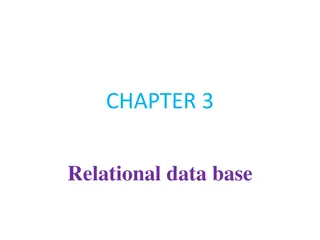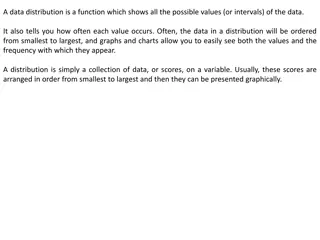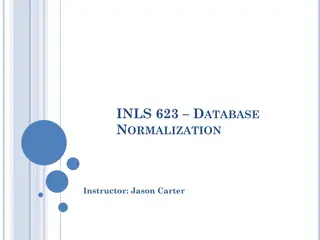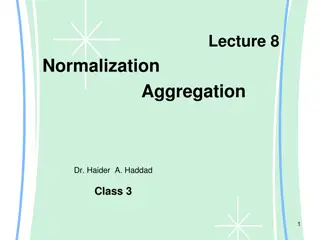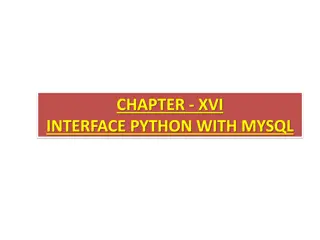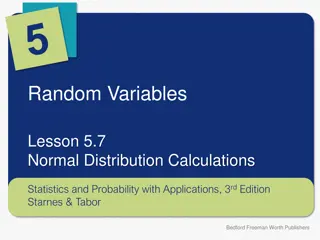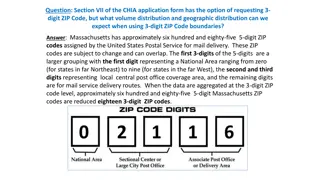Understanding Distribution Design Issues in Databases
When designing a database, decisions regarding fragmentation, correctness rules, allocation alternatives, and information requirements play a critical role in optimizing performance. Factors such as the degree of fragmentation, correctness of fragmentation, and allocation choices impact query execution efficiency. Understanding different types of fragmentation like horizontal and vertical, along with replication alternatives, helps in making informed design decisions. Information requirements in databases encompass four key categories: database, application, communication network, and computer system information.
Download Presentation

Please find below an Image/Link to download the presentation.
The content on the website is provided AS IS for your information and personal use only. It may not be sold, licensed, or shared on other websites without obtaining consent from the author. Download presentation by click this link. If you encounter any issues during the download, it is possible that the publisher has removed the file from their server.
E N D
Presentation Transcript
Distribution Design Issues BY: SHREYA MYLA PRESENTATION ID: 08
Outline: Degree of fragmentation. Correctness Rules of Fragmentation. Allocation alternatives. Information Requirements. Fragmentation and its types.
Degree of fragmentation The extent to which the database should be fragmented is an important decision as that affects the performance of query execution. The degree goes from one extreme, that is, not to fragment at all to the other extreme, to fragment to the level of individual tuples or attributes. Hence, what we need, then , is to find a suitable level of fragmentation that is a compromise between the two extremes.
Correctness of Fragmentation Completeness Decomposition of relation R into fragments R1, R2, ..., Rnis complete if and only if each data item in R can also be found in some Ri Reconstruction If relation R is decomposed into fragments R1, R2, ..., Rn, then there should exist some relational operator such that R = 1 i nRi Disjointness If relation R is decomposed into fragments R1, R2, ..., Rn, and data item diis in Rj, then di should not be in any other fragment Rk(k j ).
Allocation Alternatives Non-replicated Partitioned : each fragment resides at only one site Replicated Fully replicated : each fragment at each site Partially replicated : each fragment at some of the sites Rule of thumb: If read-only queries update queries otherwise replication may cause problems << 1, replication is advantageous,
Information Requirements Four categories: Database information Application information Communication network information Computer system information
Fragmentation Horizontal Fragmentation (HF) Primary Horizontal Fragmentation (PHF) Derived Horizontal Fragmentation (DHF) Vertical Fragmentation (VF) Hybrid Fragmentation (HF)
Horizontal fragmentation Horizontal fragmentation partitions a relation along its tuples. Primary horizontal fragmentation of a relation is performed using predicates that are defined on that relation. Derived horizontal fragmentation, on the other hand, is the partitioning of a relation that results from predicates being defined on another relation.


